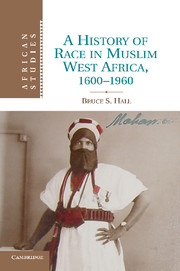Book contents
- Frontmatter
- Contents
- List of maps and figures
- Acknowledgments
- Note on orthography
- Abbreviations used in references
- Glossary
- Introduction
- PART ONE Race Along The Desert Edge, C. 1600–1900
- PART TWO Race And The Colonial Encounter, C. 1830–1936
- PART THREE The Morality of Descent, C. 1893–1940
- PART FOUR Race and Decolonization, C. 1940–1960
- Conclusion
- Index
- Misc-endmatter
PART THREE - The Morality of Descent, C. 1893–1940
Published online by Cambridge University Press: 05 August 2011
- Frontmatter
- Contents
- List of maps and figures
- Acknowledgments
- Note on orthography
- Abbreviations used in references
- Glossary
- Introduction
- PART ONE Race Along The Desert Edge, C. 1600–1900
- PART TWO Race And The Colonial Encounter, C. 1830–1936
- PART THREE The Morality of Descent, C. 1893–1940
- PART FOUR Race and Decolonization, C. 1940–1960
- Conclusion
- Index
- Misc-endmatter
Summary
PRELUDE
There were different components to the ideas about race brought to the Niger Bend by French officials working for the new colonial regime. Colonial writers were sometimes interested in physiognomic differences between the various people who lived in the region, and they generally took a dim view of the racial potential of the mass of the population, which they saw as racially degraded. However, the practical focus of French officials was on identifying those elements within different populations that were robust and noble, and therefore capable of ruling over others. Race was a way for colonial officials to judge the potential of the country and to find those who could best lead it. Over time, this would develop into a colonial idea of entire ethnic groups in racial terms.
The earliest ethnographic sketches of the Niger Bend produced in the first decade of colonial occupation juxtaposed blacks and whites, sedentary people and pastoralists. Ethnic labels were sometimes used but at least in the first few decades, there was no racial coherence to ethnic categories, because each group was composed of racially distinct social strata. In each of the main linguistically defined groupings of the Niger Bend – Tuareg, Arab, Songhay, Fulbe – French writers identified a racially superior noble class that ruled over degraded and inferior vassals and slaves. In this sense, the early French uses of race were similar to Sahelian notions based on lineage and social status, which marked social inferiority with the label of blackness.
- Type
- Chapter
- Information
- A History of Race in Muslim West Africa, 1600–1960 , pp. 173 - 175Publisher: Cambridge University PressPrint publication year: 2011

